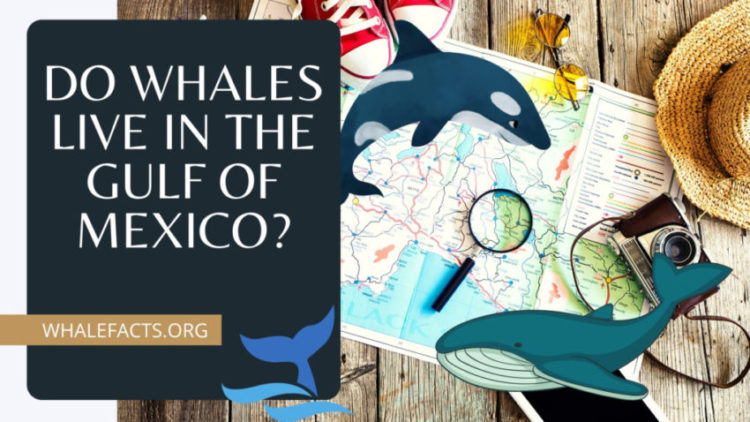Yes, whales can be found traveling throughout the waters of the Gulf of Mexico.
In fact, there are over 25 different species of whale and dolphin that can be found swimming, living, and traveling through the waters of the Gulf of Mexico.
The warm weather, connecting rivers and waterways, and abundant food supply makes the Gulf of Mexico an ideal place for whales and other marine mammals to travel through, whether for breeding purposes or to reach another destination.
Some of the most popular whale species known to inhibit the Gulf of Mexico include the blue whale, fin whale, humpback whale, minke whale, northern right whale, sei whale, and the sperm whale.
However, many other lesser-known whales also inhabit these waters, such as Blainville’s beaked whale, Bryde’s whale, the dwarf sperm whale, and Gervais’ beaked whale, and Sowerby’s beaked whale, among other species.
As stated earlier, the Gulf of Mexico is also home to various dolphin species such as the bottlenose dolphin, Clymene dolphin, Fraser’s dolphin, the killer whale, pan-tropical spotted dolphin, Risso’s dolphin, rough-toothed dolphin, and the striped dolphin, among several other dolphin species.
Here is a short list containing some of the whales and dolphins found in the Gulf of Mexico.
- Blainville’s beaked whale
- Blue whale
- Bottlenose dolphin
- Bryde’s whale
- Clymene dolphin
- Fin whale
- Fraser’s dolphin
- Gervais’s beaked whale
- Humpback whale
- Killer whale
- Minke whale
- Northern right whale
- Pantropical spotted dolphin
- Risso’s dolphin
- Rough-toothed Dolphin
- Sowerby’s beaked whale
- Sei whale
- Stripped dolphin
- Sperm whale
- Dwarf sperm whale
Depending on the whale species, some whales will travel to the Gulf of Mexico to breed and bear offspring.
Breeding for these whales typically occurs during the colder winter months when the water near the northern/southern polar hemispheres begins to freeze over, causing their food supply to migrate away and look for warmer environments.
Certain whale species will also migrate away from the freezing waters towards the Gulf of Mexico’s more tropical climates during this time.
The mating season will typically occur over the course of several months until the waters around the northern/southern polar hemispheres begin to warm up again.
Once the spring/summer time comes around, these whales migrate back to their feeding grounds and stock up on fish, krill, and other food sources until the next mating season occurs.
Not all species are known to make long migration trips.
However, as they may choose to live in and around the Gulf of Mexico throughout the year, they make short migration trips or inhibit the same environment regardless of the season.
Information about the Gulf of Mexico
The Gulf of Mexico is a large oval-shaped ocean section surrounded by land and encompassed by the United States, Mexico, and Cuba.
This large oval-shaped basin is over 615, 000 square miles.
The Gulf of Mexico contains affluent biodiversity of animals.
It is home to many different aquatic species such as plankton, fish, squid, shrimp, crab, and oysters, which are important for maintaining this basin’s health and feeding other marine animals such as whales, dolphins, porpoises, and seabirds.
This ocean area is an important waterway for boats and ships that transport goods to vary from one location to the next.
It is also an area of concern for environmentalists as more ships traveling through the Gulf of Mexico create more opportunities for water pollution, affecting both the ocean life and the people who rely on its water to survive.
Depending on the area and time of year, the Gulf of Mexico’s average temperature can range from 60 – 80 degrees.
This warm weather has been known to cause massive hurricanes, which feed on the warm air and water current to magnify itself in size.
Recent hurricane activity has led to concern regarding areas surrounding the Gulf of Mexico.
In regards to earthquakes, the Gulf of Mexico appears fairly inactive. However, trimmers are known to occur at random times.
For more information on the Gulf of Mexico, be sure to check out this excellent article on Wikipedia.
